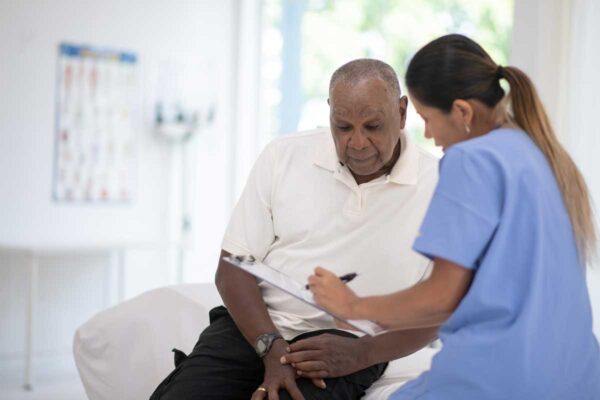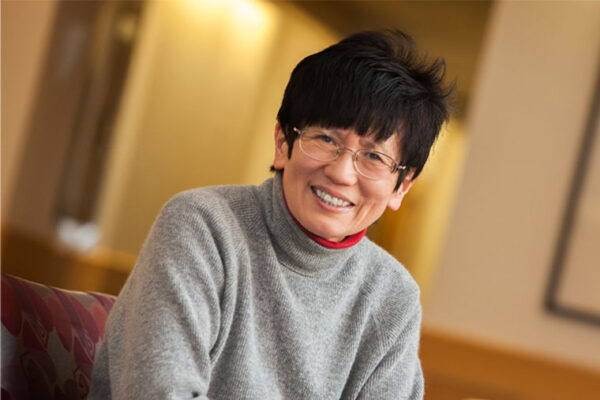Washington University School of Medicine in St. Louis is joining a new clinical trials network launched by the National Cancer Institute (NCI), part of the National Institutes of Health (NIH), to investigate emerging technologies for cancer screening, with the goal of reducing cancer-related illnesses and deaths. The medical school is among seven U.S. institutions that have received funding from the NCI to carry out screening activities that are part of the clinical trials network.
Washington University investigators will work closely with Siteman Cancer Center, based at Barnes-Jewish Hospital and Washington University School of Medicine, to lead trials that take place in Missouri and parts of Illinois. The network also aims to reach diverse populations, including people living in underserved areas.
A major focus of the network is to evaluate the effectiveness of a screening technology designed to detect multiple cancers with a single blood test. Some such multicancer detection tests already are in use, but they lack full Food and Drug Administration approval and continue to be under evaluation. The network will evaluate these tests, with the aim of helping fill a gap in early detection. Many cancers, such as pancreatic, lung, kidney, ovarian and liver tumors, can’t be identified through standard screening tests and often aren’t detected until they are too advanced to treat effectively.
“Multicancer detection tests could open the door to screening for many different types of cancer simultaneously,” said Aimee James, PhD, a professor of surgery in Washington University’s Public Health Sciences Division and co-leader of the Cancer Prevention and Control Research Program at Siteman. “But there’s a great deal we don’t know about the risks and benefits of these tests. Through the network, we can determine whether such tests can detect cancer early and save lives.”
Multicancer detection tests typically use a blood sample. The tests look for signs of cancer, such as bits of cancer DNA or proteins. A positive result does not necessarily mean a patient has cancer, and the tests can’t always identify the type of cancer that may be present. More testing is needed to look for the specific cancer type and determine next steps. False-positives and false-negatives are possible with multicancer detection tests, and it remains unclear whether the benefits will outweigh the risks, which include aggressively treating cancers that if left alone might not become problematic.
The network will launch a pilot clinical trial called the Vanguard Study on Multi-Cancer Detection to learn more about this type of test’s effectiveness in early detection of multiple cancers. The pilot study will enroll up to 24,000 participants nationwide, and the results will be used to inform the design of a much larger randomized controlled trial. Researchers across the network will evaluate whether the benefits outweigh the risks of this type of early detection and whether the testing can reduce cancer deaths.
Another key priority of the network is to ensure the clinical trials include participants from diverse populations, including people of different races, ethnicities, geographic locations and socioeconomic positions, and who receive health care in a wide variety of settings.
“We know that sometimes screening tests are expensive and not widely available, which can make disparities in cancer care worse,” James said. “We want to change that. We are talking with community members about their preferences, hopes and worries and have a panel of community partners to guide our work and ensure we conduct good science that benefits the broad community.”
Beyond multicancer detection tests, an example of an opportunity for improvement in early cancer detection is increasing the accessibility of lung cancer screening. Screening for lung cancer is recommended for adults ages 50 to 80 years who are considered heavy smokers or have a history of heavy smoking. Heavy smoking is considered to be, for example, one pack per day for 20 years, or two packs per day for 10 years. People who fit these criteria and currently smoke or have quit smoking within the last 15 years are eligible for screening. However, only about 10% of people who fit these criteria have been screened for lung cancer despite evidence that screening reduces the risk of death from lung cancer among heavy smokers. Increasing access to this type of screening includes ensuring that it’s available in rural areas, where health care is more difficult to access. See here for information about Siteman’s lung cancer screening program.
Siteman Cancer Center is uniquely positioned to reach urban and rural communities in Missouri and Southern Illinois. Siteman serves a region focused on 82 counties in these areas. Researchers will continue to work with health systems in and beyond this region to reach patients across Missouri and Illinois.
“We will work with several community-based health-care systems in rural and urban areas to conduct this research, ensuring that our reach goes into these communities,” James said. “These health-care providers are helping us design studies in a way that is fair and accessible, so it works not just in big academic medical centers but in the places where most people access their health care.”
Washington University’s Cancer Screening Research Network (CSRN) site is co-led by James, Yikyung Park, ScD, and Adetunji T. Toriola, MD, PhD, all professors of surgery in the Public Health Sciences Division in the Department of Surgery. They also are research members of Siteman Cancer Center, and Toriola co-leads Siteman’s Cancer Prevention and Control Research Program.
The other NIH-funded sites include the network’s coordinating center at Fred Hutchinson Cancer Center in Seattle and the trial sites that will enroll participants at Henry Ford Health and Michigan State University Health Sciences; Kaiser Permanente Northern California, Kaiser Permanente Southern California and Kaiser Permanente Bernard J. Tyson School of Medicine; Oklahoma University Health Stephenson Cancer Center; the University of Colorado Cancer Center; the University of North Carolina Lineberger Comprehensive Cancer Center; and Virginia Commonwealth University, including the Inova and Sentara Health health-care systems. The Department of Defense Uniformed Services University and the Department of Veterans Affairs also will participate as sites with funding from their respective agencies.
This work is supported by the National Cancer Institute (NCI) of the National Institutes of Health (NIH), grant number 1UG1CA286946-01. This content is solely the responsibility of the authors and does not necessarily represent the official views of the NIH.
About Washington University School of Medicine
WashU Medicine is a global leader in academic medicine, including biomedical research, patient care and educational programs with 2,900 faculty. Its National Institutes of Health (NIH) research funding portfolio is the second largest among U.S. medical schools and has grown 56% in the last seven years. Together with institutional investment, WashU Medicine commits well over $1 billion annually to basic and clinical research innovation and training. Its faculty practice is consistently within the top five in the country, with more than 1,900 faculty physicians practicing at 130 locations and who are also the medical staffs of Barnes-Jewish and St. Louis Children’s hospitals of BJC HealthCare. WashU Medicine has a storied history in MD/PhD training, recently dedicated $100 million to scholarships and curriculum renewal for its medical students, and is home to top-notch training programs in every medical subspecialty as well as physical therapy, occupational therapy, and audiology and communications sciences.
Siteman Cancer Center is one of only a few cancer centers to receive the highest rating of the National Cancer Institute (NCI) – “exceptional.” Comprising the cancer research, prevention and treatment programs of Barnes-Jewish Hospital and Washington University School of Medicine in St. Louis, Siteman treats adults at six locations, including an inpatient hospital, and partners with St. Louis Children’s Hospital in the treatment of pediatric patients at Siteman Kids. An outpatient facility scheduled to open in September 2024 on the Washington University Medical Campus will become the newest Siteman location to offer patient-focused, multidisciplinary care driven by scientific breakthroughs and powered by Washington University Physicians.
Siteman is Missouri and southern Illinois’ only NCI-designated Comprehensive Cancer Center and only member of the National Comprehensive Cancer Network. Through the Siteman Cancer Network, Siteman Cancer Center works with regional health systems and hospitals to improve access to highly specialized cancer care and reduce the incidence of cancer through initiatives in cancer prevention, treatment and research.
Originally published on the School of Medicine website



